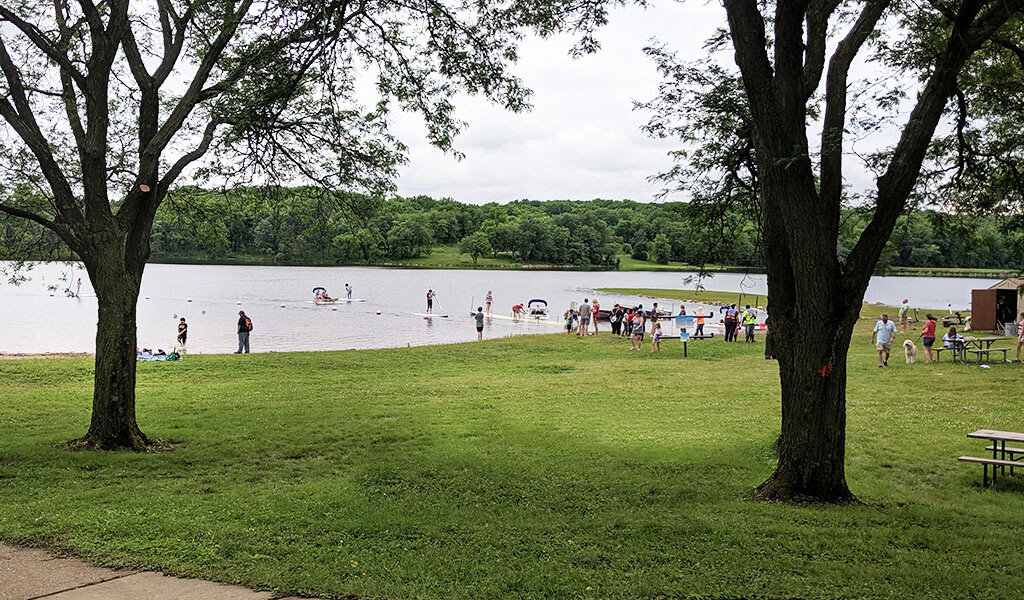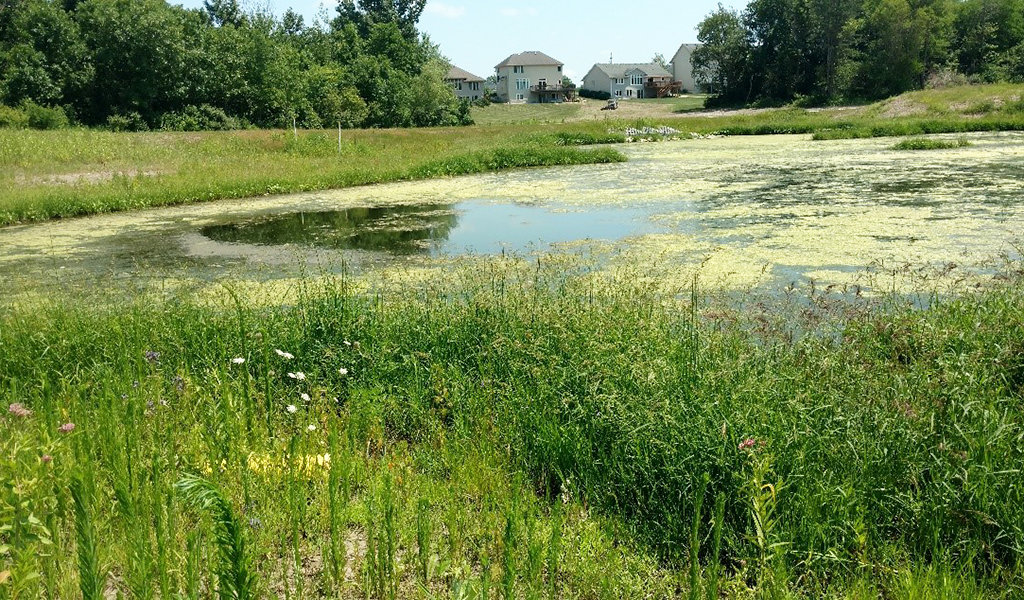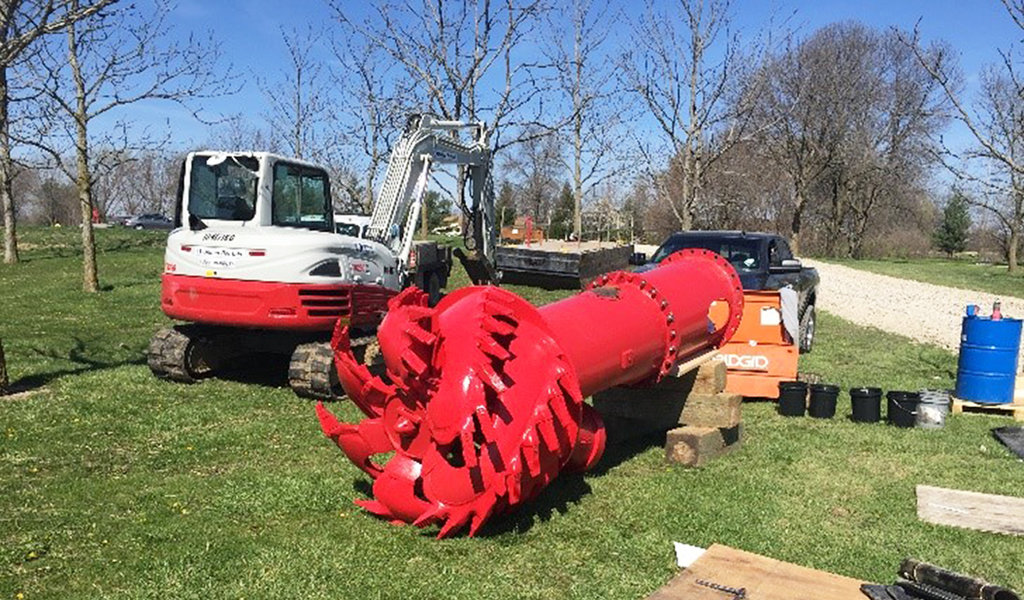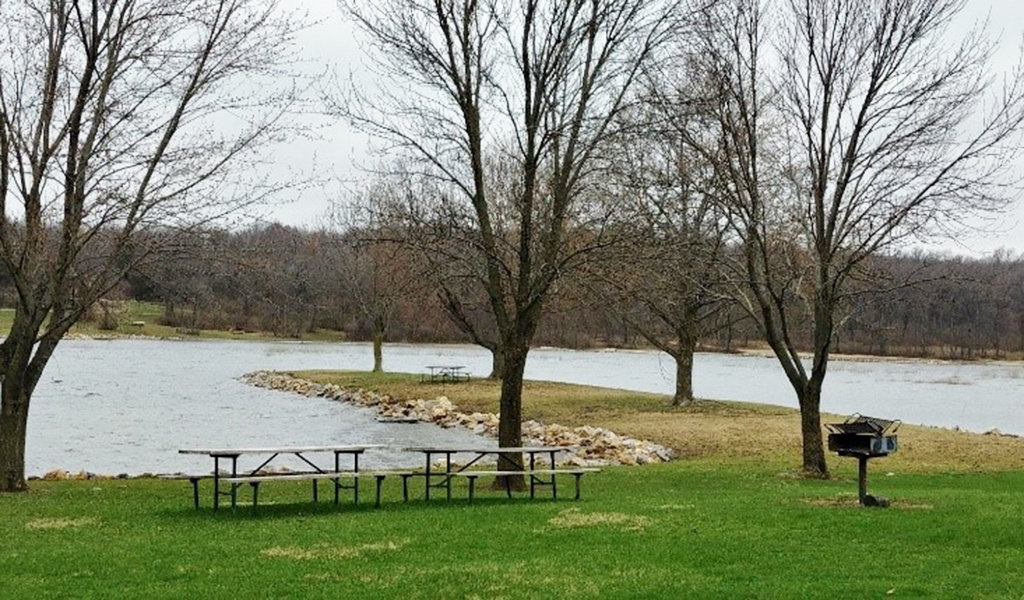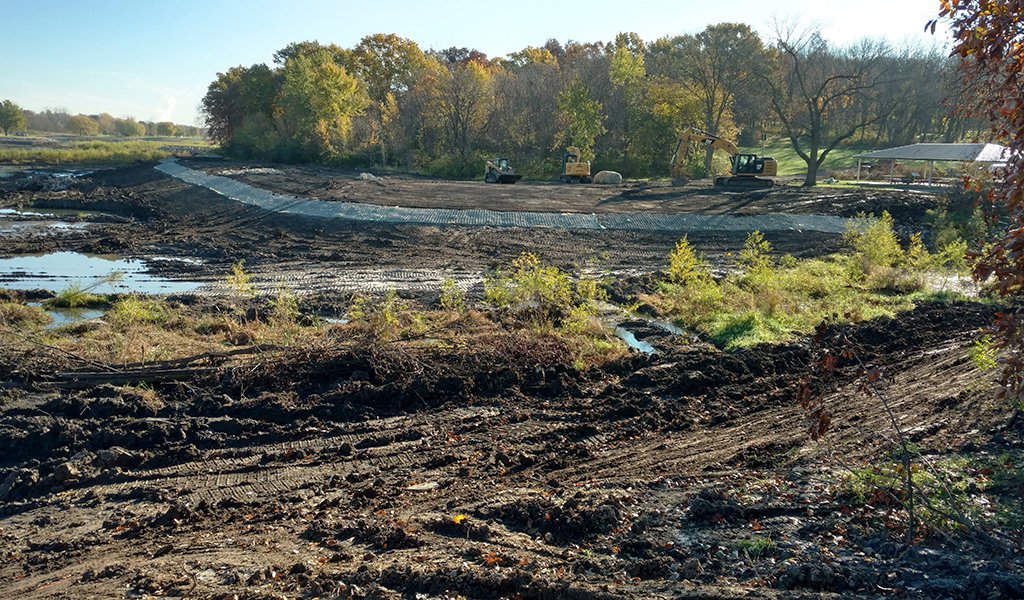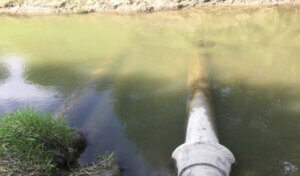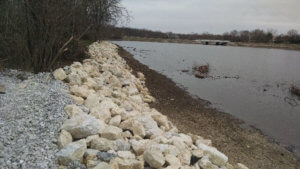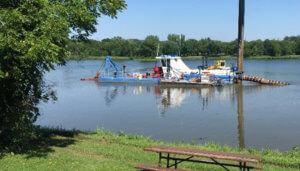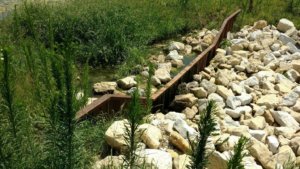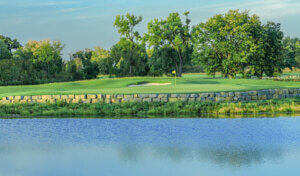
Popular Recreation Destination Offers a Variety of Outdoor Activities
Since its creation in 1967, the 464-acre Easter Lake Park on the south side of Des Moines has been a popular outdoor recreation destination – often hosting over 400,000 visitors a year. Managed by the Polk County Conservation Board (PCCB), the park offers a range of amenities, including five picnic shelters, three playgrounds, volleyball courts, and multi-use trails. Additionally, the park supports a number of outdoor activities like geocaching, hiking, and bicycling.
But perhaps the highlight of the park is the 178-acre lake. Stocked yearly by the PCCB, the lake draws anglers from around the region looking to catch bass, walleye, and catfish. A boat ramp provides access to the lake for fishermen and recreational boaters alike. Easter Lake is also the perfect location for canoeing and kayaking on its calm, no-wake waters. During the summer, a swimming beach is open on the lake’s north side to round out the entertainment options.
Lake Receives “Impaired Waters” Designation Due to Poor Water Quality & Heavy Sedimentation
Unfortunately, throughout the 1990s and early 2000s, the lake struggled with diminishing water quality as residential development in the lake’s watershed increased. Issues such as poor water clarity, algal blooms, high phosphorus rates, and low oxygen concentrations led to Easter Lake being added to the State of Iowa’s “impaired waters” list. The sedimentation issues, along with increased shoreline erosion, decreased the lake’s size (both in area and volume).
In addition, an increase of invasive fish populations resulted in a poor fishery, while the water clarity and quality issues led to health alerts being issued to swimmers on many occasions over the years. All of these issues resulted in Easter Lake not reaching its full potential as an outdoor enthusiast’s destination of choice.
The Birth of the Easter Lake Water Quality Management Plan
In response to these water quality problems, numerous stakeholders came together to develop the Easter Lake Water Quality Management Plan in 2012. Co-sponsored by the Iowa Department of Natural Resources (IDNR), the City of Des Moines, and the PCCB, this 10-year plan resulted from the compilation of existing studies (performed by Iowa State University scientists and the Natural Resources Conservation Service) and consultant’s recommendations for structural and non-structural best management practices (BMPs). The goal of these studies was to advance methods to reduce the delivery of pollutants to the watershed, reduce stormwater runoff, and create a path for the renovation and restoration of Easter Lake as a vibrant recreation hub for Des Moines and the surrounding area.
The Easter Lake Water Quality Management Plan would serve as the baseline for the design work performed by Snyder & Associates. Since the restoration project recommendations outlined in the plan were wide-ranging and involved numerous types of construction and expertise, our firm was hired to provide civil engineering services. Projects were divided into several phases that allowed for better contractor specialization to guide the project’s success. Core projects designed and planned by Snyder & Associates included:
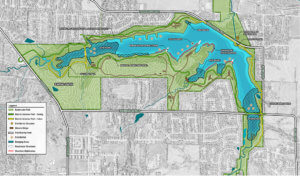
This concept rendering shows proposed structural improvements to be completed for the Easter lake restoration project.
- New spillway design and fish-rearing pond improvements
- Creation of a lake drainage plan
- Sedimentation basin design and drainageway improvements
- Hydraulic dredging plan
- Stormwater wetland improvements
- Multi-use trail project design
- Lake-grading management and shoreline restoration design
- Fish habitat restoration
Extensive Environmental Permitting Required for Lake Improvements
Before work could begin on any of the Easter Lake projects, permits needed to be obtained from multiple agencies. Obtaining permits for a project of this size and scope is a project in itself. The process involves numerous environmental surveys, assessments, analyses, and documentation. Snyder & Associate’s environmental team performed all of the permitting work and provided all of the services necessary, including:
- Three wetland and stream delineations
- One biological assessment
- Three threatened & endangered species surveys
- Two bat habitat surveys
- Two cultural resources investigations
- Two alternatives analyses
- Three 404 permit application submittals through the U.S. Army Corps of Engineers (USACE)
Our environmental staff collaborated extensively with design engineers, the PCCB, the USACE, and the Iowa DNR in order to obtain the needed permits. Given the detailed level of engineering and environmental documentation we provided, most agencies were able to expedite their review and issuance of permits. One of the permit conditions included the purchase of wetland mitigation credits from a wetland mitigation bank. Our team diligently worked through this process to ensure all conditions were met.
New Spillway Design, Fish-Rearing Pond Improvements, & Lake Drainage Plan
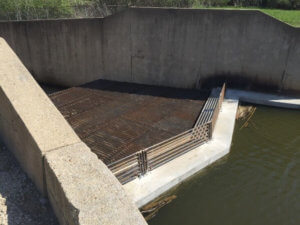
The fish barrier attached to the spillway is designed to keep desirable fish in the lake and undesirable fish out.
In 2015, the first construction phase of the lake restoration kicked off. The projects included repairs and improvements to the existing spillway (including a custom fish barrier), repairs to the existing fish-rearing pond, and installation of a new lake drain control gate structure.
The Snyder & Associates team performed a hydraulic analysis of the dam and spillway. It was determined that high flows needed to be better able to pass the spillway during storms and major flood events. To pass large flows safely, our team custom-designed a fish barrier. The fish barrier would break away at shear pin locations, allowing it to be put back in place with minimal labor and cost.
Also, to help prevent the introduction of invasive species, the fish barrier was designed with a structural steel exclusion system built into the concrete portion of the spillway. This system works together with a vertical barrier component to keep desirable fish in and undesirable fish out.
Due to severe shoreline erosion, the fish-rearing pond was in danger of damage caused by lake encroachment. To mitigate this issue, approximately 500 linear feet of shoreline was repaired, shaped, and stabilized with riprap.
The existing lake drain control structure was only marginally usable. Repairing the structure was particularly challenging due to its depth and confined space. A critical portion of the repair was conducted by diving 40 feet into the control structure, which was challenging and hazardous. The structure was ultimately retrofitted with two new control gates and cover to improve security, usability, and redundancy in the event that a gate was to fail in the future. The repair of the drain control valve would ensure the lake could be safely drained for dredging and shoreline improvements.
Sedimentation Basin Upgrades & Drainageway Improvements
Early on in the project, it was apparent that controlling sediment load into the lake was critical to the project’s success. The Easter Lake watershed covers a total of 6,380 acres and originates near the Des Moines International Airport, several miles to the west. To help control sediment loading, construction of two major sedimentation basins were completed at the primary drainageways. The basins were designed to trap sediment, thereby sequestering phosphorus and debris. They were also designed to allow cleanout in the future, if required.
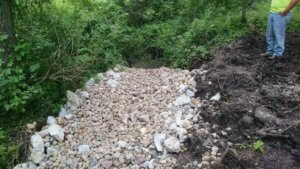
Rock chute letdown structures were added to help prevent erosion and sedimentation at minor drainage ways.
In addition to the large sedimentation basins, smaller sediment traps, modified ditch checks, and rock chute letdown structures were constructed on several of the smaller creeks and drainageways. The sediment traps and ditch checks reduce water velocity, which allows sediment to settle out and prevents further erosion. The rock chute letdown structures were added to prevent erosion and sedimentation in areas where minor drainageways discharge into the lake. The Snyder & Associates team developed construction options to minimize damage to the surrounding forest areas, including the use of small rock components and machinery.
Hydraulic Dredging to Redefine the Lake Bottom
During the summer and fall of 2016, targeted hydraulic dredging of the lake was performed. The goal of the dredging was to enhance fisheries, improve water quality, and restore the original lake bottom in key areas.
Our environmental team determined that a sandpit owned by the PCCB and located on the opposite side of the Des Moines River from Easter Lake was the optimal location to deposit sediment dredged from the lake. Through diligent coordination with the USACE and after completing a bathymetric survey of the Des Moines River, our subcontractor was able to install approximately 16,000 feet of dredge and return pipe connected to the sandpit. The pipes were required to cross a busy public roadway, creeks, the Des Moines River, the Union Pacific Railroad tracks, and forested wetlands.
Through careful route selection, damage to the forested wetland adjacent to the river was nearly nonexistent. Due to relatively low water inflow during the summer months, pumping water back to Easter Lake from the sandpit through the return pipes was necessary to make continuous dredging possible.
Stormwater Wetland Improvements Reduce Nutrients
In the summer of 2017, Snyder & Associates completed the design and final plans for a stormwater wetland area that was constructed in a highly silted inlet of the lake. The project provides a sediment removal forebay and a small wetland to treat stormwater runoff from approximately 37 acres of residential development near Easter Lake. The wetland will serve as a sediment and nutrient removal space for the surrounding urban watershed for many years to come.
The Easter Lake Water Quality Management Plan goals included sediment reduction, water clarity improvements, and nutrient reduction. Wetlands naturally perform these functions, so this portion of the projects goals were a natural fit for overall restoration. The wetlands area will sequester phosphorus that’s attached to sediment, promote plant growth to reduce nitrogen, and provide wildlife habitat.
Trail Loop Connects the Park and City Trails
The aforementioned wetland area was also designed in conjunction with the Easter Lake Trail project that passes through the site. Named for the former Iowa Natural Heritage Foundation (INHF) president Mark C. Ackelson, the trail project, also designed by Snyder & Associates, was a separate but coordinated component of the Easter Lake restoration plan. The new, six-mile trail loop winds around Easter Lake and connects to the eastern portion of Ewing Park. This trail system provides excellent opportunities for public awareness through informational signage and an up-close view of the wetland area.
The trail incorporates several bridges (including the Owens Covered Bridge), but the most notable is the new 440′-long bridge that spans the western arm of the lake. This bridge features twin piers with observation bump-outs that make it a great spot to view the beauty of Easter Lake.
Additional Lake Grading, Shoreline Restoration, & Fish Habitat Improvements
Once the hydraulic dredging was complete, the final phase of the lake restoration focused on draining the lake to perform additional mechanical dredging of targeted areas, shoreline stabilization, and fisheries improvements. The mechanical dredging of select areas was used to further deepen and shape portions of the lake bottom. Some of the dredged material was used to reshape the lake shoreline and was strategically placed to improve and create usable public space adjacent to the lake.
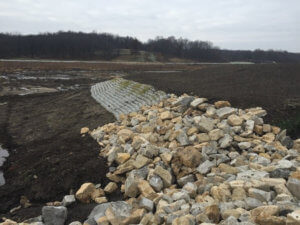
Riprap armoring and Flexamat concrete block mats provide stabilization along the reshaped shoreline.
In areas where wave action had eroded the shoreline, restoration involved shoreline shaping and stabilization using riprap revetment armoring, Flexamat® concrete block mats, fiber logs, and native seeding. Treatment selection was based on the risk of shoreline erosion, aesthetics of the location, and cost. The project also used large, reclaimed stones as accent outcroppings. The stones were salvaged by Polk County from various locations.
Fisheries improvements were accomplished through the creation of fish habitat structures. Damaged precast concrete pipe, as well as broken concrete, were recycled to create fish habitats. Gravel and rock rearing beds were built in select locations, and sunken tree habitats were created by volunteer organizations with assistance from a contractor.
Lake Restoration Project Restores a Community Recreation Hub
While the work outlined by the Easter Lake Water Quality Management Plan will continue on, including more non-structural improvements and public education about how to better take care of our watersheds, the structural restoration portion of the plan wrapped up in the fall of 2018.
Now, after nearly six years of planning, design, and construction, Easter Lake is open again for swimming, kayaking, and fishing. Initial indications show that all lake improvement projects designed by Snyder & Associates are functioning as expected and helping the area to flourish in both aquatic habitat and recreational activity.
